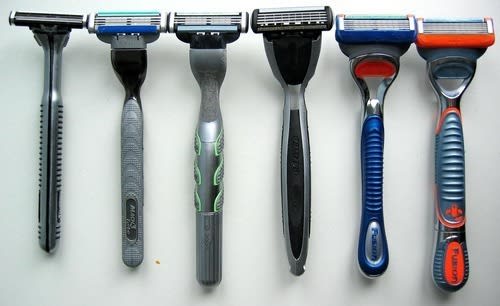The Torah forbids men from shaving the “corners of the beard” with a razor. (Vayikra 19:27. Most electric razors work like scissors and don’t fall foul of this prohibition.) In the teachings of Rav Nachman of Breslav we find an involved and profound explanation of this law.
Let us begin by explaining the symbolism of the hair of the head. Our head is the crown of our bodies, and is the source of our thoughts and visions. On a more mundane level, the head is the source of our hair. This conjunction makes the hair of the head a profound symbol of spirituality which is fallen, thickened, and occluded. Reinforcing this idea is the Hebrew word for hair, “se’ar”, which has the same letters as the word “shi’ur” meaning measure; representing the reduction of the transcendental nature of spirituality to the aspect of limitation and measurement.
In Chasidic thought, such “occluded” spirituality has a dual role. On the one hand, it is exactly this descent and occlusion which enables us to apprehend the Divine Light, which would blind and indeed obliterate us were it not for the presence of its material manifestation which acts like a shaded lens. Yet often this occlusion occludes G-d’s lambency more than is called for; then it is an obstacle to His service.
Rebbe Natan of Breslav, the student of Rav Nachman, explains that it is particularly the hair of the face which expresses the positive aspect of occlusion. In everyday terms we would understand this insight by noticing that the beard does cover the face, yet does not in general hide the person’s facial expressions but rather softens them a bit, at the same time adorning the face. “The beard is the glory of the face” (Shabbat 152a). In the same way, the Divine glance is made apprehensible by the veil of materiality through which we perceive it.
An uncovered face, contrarily, suggests insolence, as in the expression “a bare-faced lie” or in the word “effrontery”. When we recognize the Divine glow which emanates even from a human face, we simultaneously recognize the need for modesty in its display. This explains the prohibition of destroying the beard.
The idea of insolence is particularly connected with the forehead, as when the prophet reproves the people for their “brazen brow” (Yishayahu 48:4). This explains the importance of the sidelocks, or “corners” of the beard (peyot), which grow beside the brow. An additional hint at the importance of the peah is its numerical value, 86. This is the same as the numerical value of the name “Elokim”, which represents the more earthly and limited manifestation of G-d’s presence.
However, the Torah prohibits cutting this hair only with a razor, not with scissors. Rebbe Natan likens this to the Torah prohibition of cutting the stones of the altar with a metal implement. The altar is a mundane physical structure which serves as the conduit for exalted spiritual communication. Iron implements are like a sword, the very symbol of destruction; the sword needs to be distanced from the altar which is the source of life. Our facial hair is also a conduit for spiritual communication, as our facial expressions are both nuanced and softened through the beard, and the mouth is surrounded by it.
And the elongated shape of the hair reminds us of a tube, reinforcing this symbol of a conduit. So from this symbol of life we also distance the sword, that is the razor.
Of course the full meaning of the beard and sidelocks are evident especially when we don’t remove them at all. Therefore, Rav Nachman discourages cutting the beard or peyot even with scissors.
Rabbi Asher Meir is the author of the book Meaning in Mitzvot, distributed by Feldheim. The book provides insights into the inner meaning of our daily practices, following the order of the 221 chapters of the Kitzur Shulchan Arukh.
The words of this author reflect his/her own opinions and do not necessarily represent the official position of the Orthodox Union.
